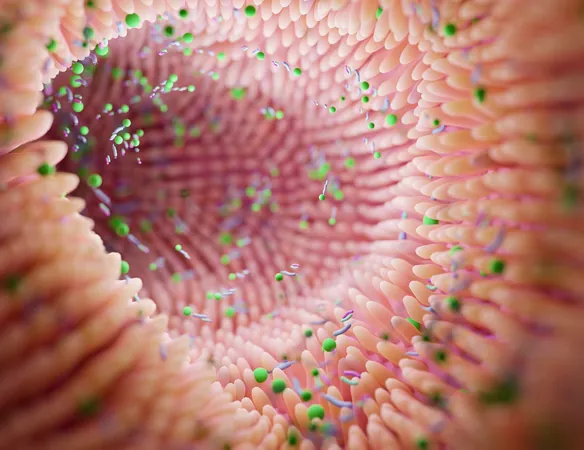
Unlocking Secrets of Gut Bacteria: How They Detect Nutrients to Boost Our Health!
2025-08-31
Author: Ming
Revolutionary Study Reveals Gut Microbes' Nutrient-Sensing Skills!
A groundbreaking new study has uncovered how common gut bacteria, rather than notorious lab pathogens, detect chemical cues that help them thrive and locate nutrients. Spearheaded by Victor Sourjik at the Max Planck Institute for Terrestrial Microbiology, this research challenges long-held assumptions about the gut microbiome.
The Microbial Economy: A World of Chemical Communication
The gut microbiome is a vibrant community of microbes engaged in a complex economic exchange, sharing byproducts and resources. Cross-feeding among these bacteria is crucial, enhancing the ecosystem's resilience. Bacteria utilize a process known as chemotaxis, swimming toward beneficial chemicals while avoiding harmful ones.
What Do Gut Bacteria 'Smell'?
The researchers aimed to answer a fundamental question: What are the chemical signals that beneficial gut bacteria detect within the intestinal environment? By constructing a library of sensory domains from 20 different gut species, they screened over 150 metabolites, identifying 34 specific receptors aligned with various compounds.
The Power of Carboxylic Acids and Short-chain Fatty Acids
Notably, the study found that carboxylic acids, particularly lactic and formic acids, were highly favored by these microbes. This preference aligns with the community metabolism where one microbe's waste becomes another's treasure. The presence of lactate and formate was linked directly to enhanced growth in certain bacterial strains.
The Intricacies of Bacterial Sensing
The research also delved into the structures of bacterial sensors. A unique dual-module sensor was discovered, capable of detecting both uracil and acetate. This flexibility hints at how bacteria might adapt their sensing capabilities to optimize nutrient uptake.
Communication and Collaboration Among Microbes
The findings emphasize how bacteria communicate with one another using chemical signals. When one species releases lactate or formate, it creates a 'food trail' that neighboring bacteria can follow, fostering cooperative relationships essential for a balanced gut environment.
Implications for Diet and Health
This research suggests that understanding and modifying the metabolites in our diets can influence where and how these beneficial microbes flourish. Creating therapies that maintain optimal levels of lactate could enhance gut health by stabilizing microbial communities.
Paving the Way for Future Research
The dual-module sensors identified open new avenues for exploring how bacteria might adapt their sensing mechanisms over time. Investigating these preferences against dietary changes or during illness could hold crucial insights for future health interventions.
With this remarkable study recently published in the Proceedings of the National Academy of Sciences, we're closer than ever to understanding the vital role that our gut microbiome plays in maintaining our health!






 Brasil (PT)
Brasil (PT)
 Canada (EN)
Canada (EN)
 Chile (ES)
Chile (ES)
 Česko (CS)
Česko (CS)
 대한민국 (KO)
대한민국 (KO)
 España (ES)
España (ES)
 France (FR)
France (FR)
 Hong Kong (EN)
Hong Kong (EN)
 Italia (IT)
Italia (IT)
 日本 (JA)
日本 (JA)
 Magyarország (HU)
Magyarország (HU)
 Norge (NO)
Norge (NO)
 Polska (PL)
Polska (PL)
 Schweiz (DE)
Schweiz (DE)
 Singapore (EN)
Singapore (EN)
 Sverige (SV)
Sverige (SV)
 Suomi (FI)
Suomi (FI)
 Türkiye (TR)
Türkiye (TR)
 الإمارات العربية المتحدة (AR)
الإمارات العربية المتحدة (AR)